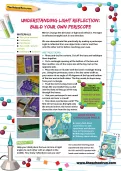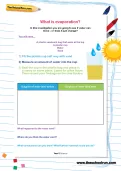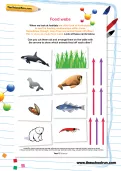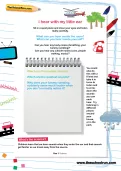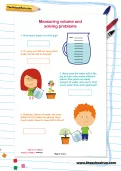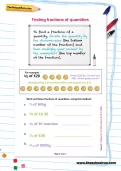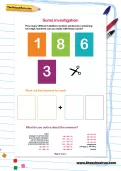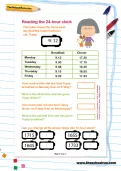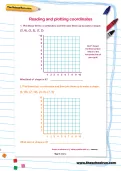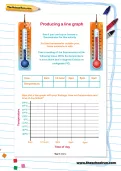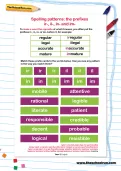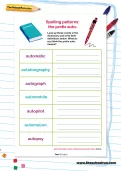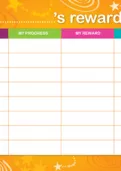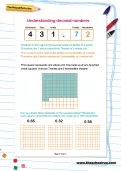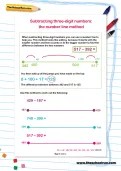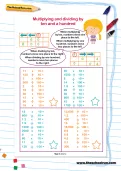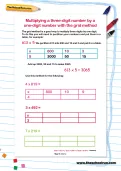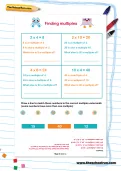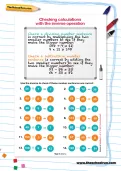Can you work out the answers to these tricky volume problems?
or
Register to add to your saved resources
Already a subscriber? to view this content.
To find a fraction of a quantity, divide the quantity by the denominator (the bottom number of the fraction) and then multiply your answer by the numerator (the top number of the fraction). Can you work out these fractions of quantities, using this method?
or
Register to add to your saved resources
Already a subscriber? to view this content.
Imagine an ant crawling around the outside of a shape. The distance the ant walks is the shape’s perimeter. Can you measure the sides of these shapes by counting the squares and work out their perimeters?
or
Register to add to your saved resources
Already a subscriber? to view this content.
How many different addition number sentences containing two-digit numbers can you make with these cards?
or
Register to add to your saved resources
A KS2 maths worksheet created by an experienced teacher to help your child learn how to tell the time using the 24-hour clock.
or
Register to add to your saved resources
Plot these four co-ordinates and then join them up to make a shape. What kind of shape is it?
or
Register to add to your saved resources
Already a subscriber? to view this content.
See if you can buy or borrow a thermometer for this activity. Put the thermometer outside your home somewhere safe. Take a reading of the thermometer at the following times. Write the temperature in each blank box in degrees Celsius or centigrade. Now plot a line graph with your findings. How are temperature and time of day linked?
or
Register to add to your saved resources
This line graph shows how the temperature outside Mary’s house changes over the course of one day. Can you read the graph and answer the following questions?
or
Register to add to your saved resources
Already a subscriber? to view this content.
To make a word the opposite of what it means, you often put the prefixes ir-, il-, in- or im- before it. Match these prefix cards to the words below. Can you see any pattern in the way you match them?
or
Register to add to your saved resources
Already a subscriber? to view this content.
Look up these words in the dictionary and write their definitions below. What do you think the prefix auto means?
or
Register to add to your saved resources
Celebrate your child's Learning Journey successes with these fantastic printable certificates. Print them off and fill them in with your child's name. Then stick them on your fridge – because that's what fridge doors were invented for!
or
Register to add to your saved resources
Support your child's Learning Journey with this fantastic motivational resource – a colourful reward chart where you can set your own challenges and choose rewards together.
or
Register to add to your saved resources
Father Christmas is stuck in a maze. Help him to find a way out so he can deliver your presents! Can you give Father Christmas instructions to the maze exit? Decide which way he should go, then write down your instructions using these commands. F = go forwards, R90 = turn right 90°, L90 = turn left 90° Your instructions might look like this: F\R90\F\L90… and so on. There are lots of different possible routes; try all the exits from the centre.
or
Register to add to your saved resources
Numbers to the right of the decimal point are tenths of a whole. Numbers to the right of the tenths are hundredths of a whole. Can you shade these decimals on the squares below? Remember: each square represents one whole unit, made up of 100 hundredths.
or
Register to add to your saved resources
Already a subscriber? to view this content.
When subtracting three-digit numbers you can use a number line to help you. This method looks like adding, because it starts with the smaller number and then counts on to the bigger number to find the difference between the two numbers. You then add up all the jumps you have made on the top. Use this method to work out these sums.
or
Register to add to your saved resources
Already a subscriber? to view this content.
When multiplying by ten, numbers move one place to the left. When multiplying by one hundred, numbers move two places to the left. When dividing by ten, numbers move one place to the right. When dividing by one hundred, numbers move two places to the right. Use this method to work out the answers to these questions.
or
Register to add to your saved resources
Already a subscriber? to view this content.
The grid method is a good way to multiply three digits by one digit. To do this you will need to partition your numbers and put them in a table. Can you use the grid method to work out these sums?
or
Register to add to your saved resources
Already a subscriber? to view this content.
Draw a line to match these numbers to the correct multiple underneath. (Remember, some numbers have more than one multiple.)
or
Register to add to your saved resources
A FACTOR is a whole number that multiplies with another whole number to make a third number. Can you find all the pairs of factors for these numbers?
or
Register to add to your saved resources
Already a subscriber? to view this content.
Can you use the inverse to check if these number sentences are correct? Remember: check a division number sentence is correct by multiplying the two smaller numbers to see if they make the bigger number; check a subtraction number sentence by adding the two smaller numbers to see if they make the bigger number.
or
Register to add to your saved resources
Already a subscriber? to view this content.
